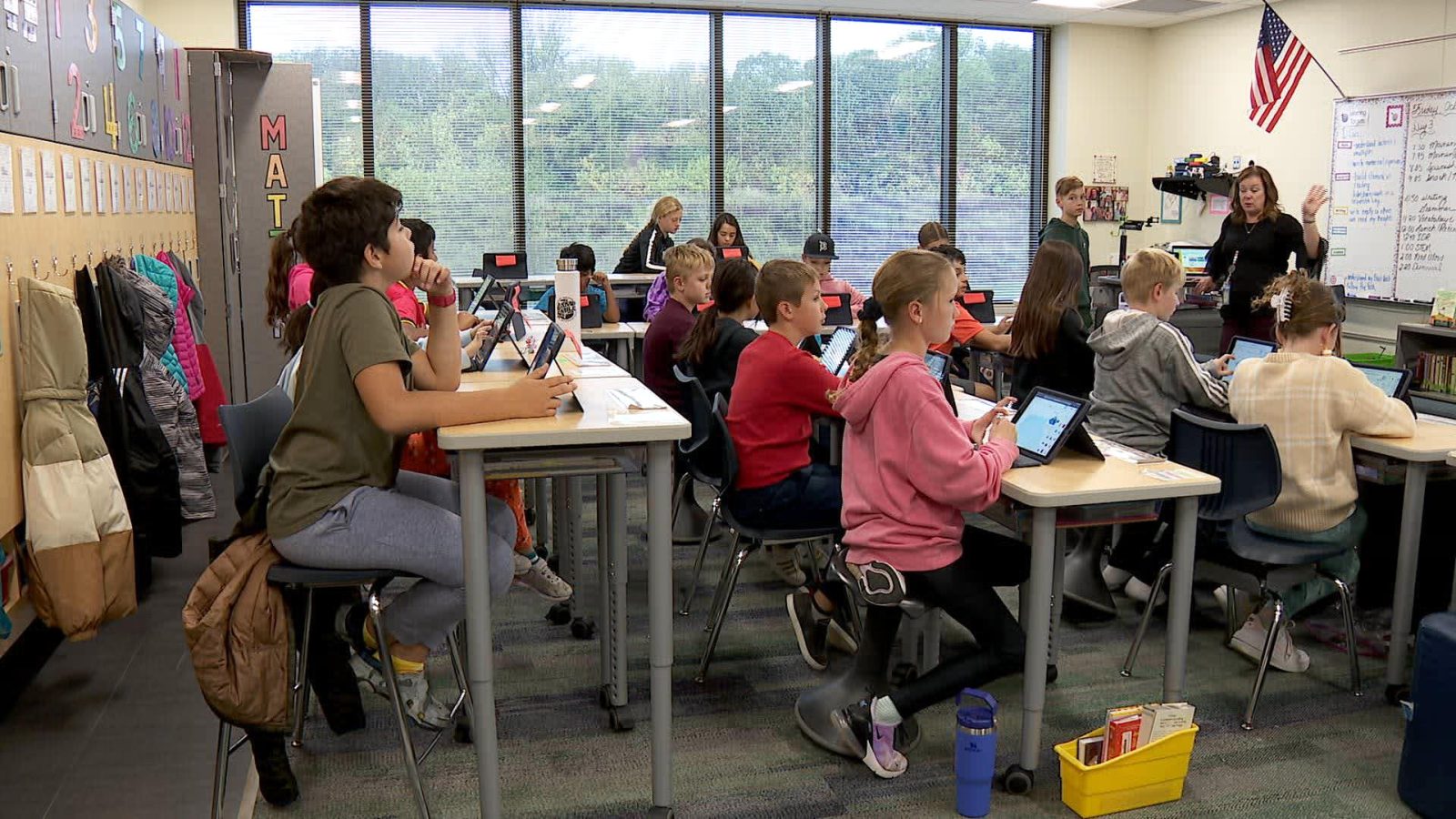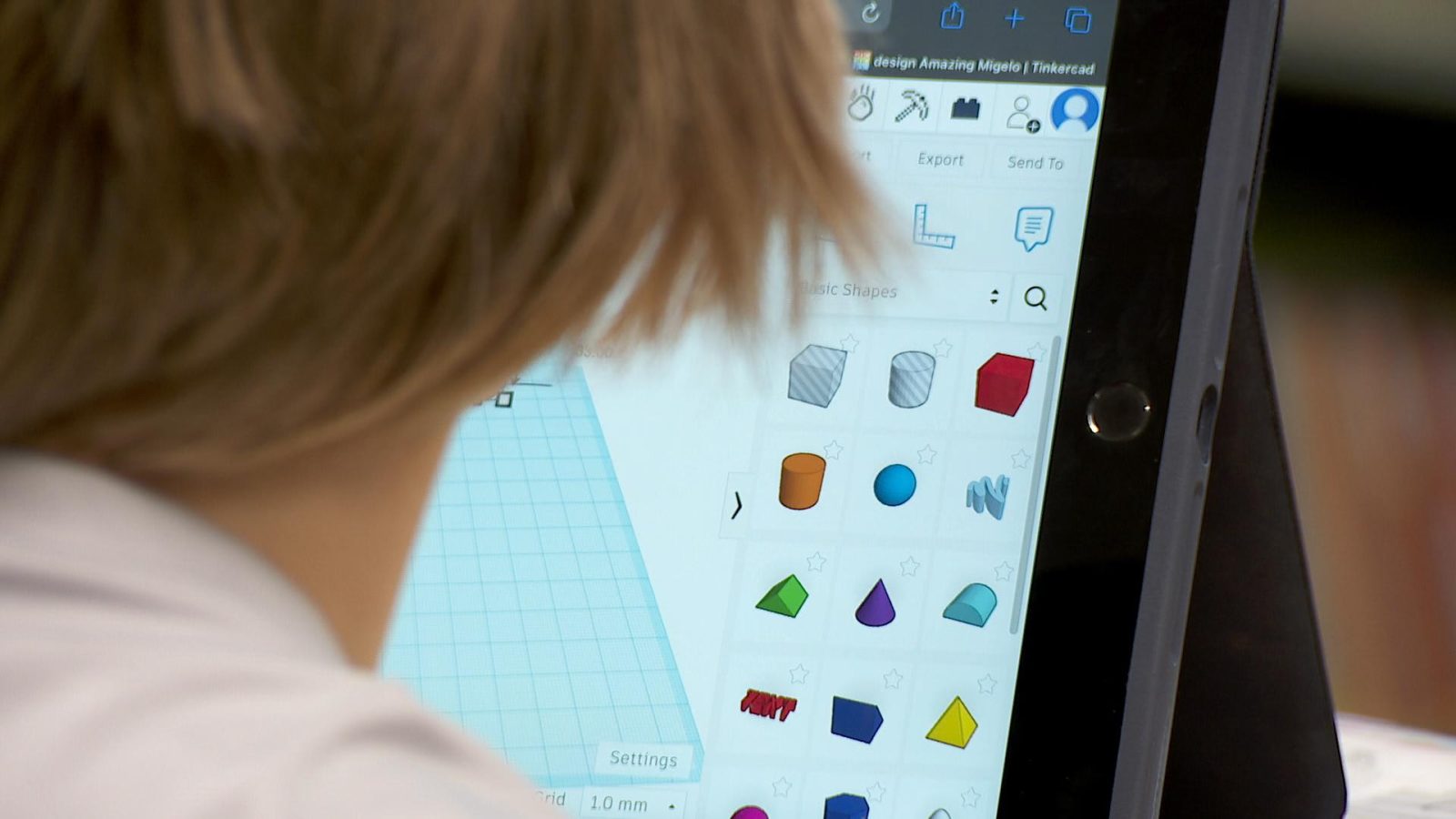Wayzata School District Voters To Decide Fate of Technology Levy
Voters in the Wayzata Public Schools district will decide the fate of a technology levy this November.
District officials say it’s an important decision that will help shape classroom instruction for years to come.
Technology levies are voter-approved sources of property tax revenue that pay for school district IT staff, school security systems and classroom technology equipment.

Lisa Carlson, standing at-right, conducts a lesson on computer aided design software. Carlson is a 5th grade teacher at North Woods Elementary School in Plymouth. The school is part of the Wayzata Public Schools district.
Technology in Wayzata Schools Classrooms
For many students at North Woods Elementary, technological equipment can come in the form of an iPad.
“We would not be teaching the way we teach without them,” said Lisa Carlson, a fifth-grade teacher at North Woods Elementary in Plymouth. “The students use them multiple times per day. They submit assignments, they have quizzes on them.”
According to Carlson, equipment like iPads and smartboards are an integral part of teaching.
“I’ve been teaching since [1991] and I can’t believe the technology that we have now,” she said. “It just is seamless and it actually is just bringing these kids into the real world, 21st century.”
According to Wade Phillips, director of technology at Wayzata Public Schools, classrooms don’t look like they did in previous decades.
“In times when I went to school, and maybe some of the parents and guardians out there, they had paper,” Phillips said. “They had pencils, they had notebooks. They had physical textbooks. A lot of that has moved to the digital world.”

A student in the Wayzata Public Schools district uses an iPad in class.
Levy Funds Technology
But all the tech it takes to run a district isn’t free. The state of Minnesota doesn’t provide schools with a dedicated fund for technology upgrades.
Rather, schools have to rely on voter-approved property tax levies to fund tech improvements.
With one of Wayzata Public School’s tech levies expiring, the district is asking voters to renew it.
Since the levy is already in place, if voters move ahead with renewal, it won’t raise taxes above their current rate.
The levy would generate approximately $5.7 million per year for the next 10 years.
Security
While technological devices may be the most visible use for the levy, it also funds district security.
From “door-access control [and] security cameras,” to “firewalls, endpoint protection, anti-virus [and] anti-malware [software],” the tech levy funds a variety of security measures, Phillips said.
If voters approve the levy, the district hopes to secure not only buildings and devices, but also students’ futures.
“We’re really trying to prepare our kids not just for what’s going on today, but what is in the future,” Phillips said.


